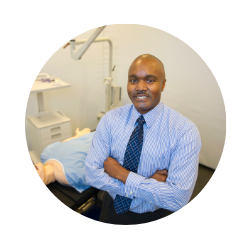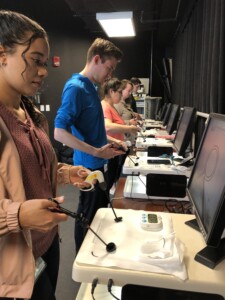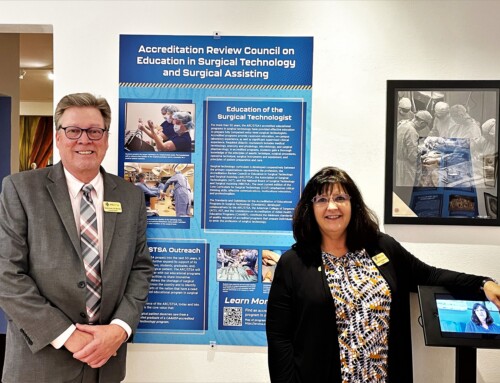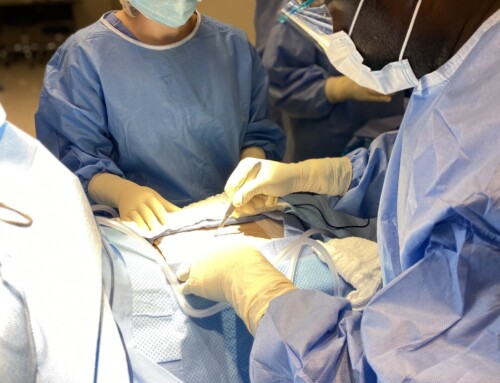
R. Clinton Crews, Assistant Dean of Admissions
By R. Clinton Crews, MPH, Assistant Dean of Admissions, Eastern Virginia Medical School
Since 2013, the master of surgical assisting program at Eastern Virginia Medical School has offered the minimally invasive surgery lecture and skills lab. This course is designed to give the surgical assistant student a broad look into minimally invasive surgery while introducing the techniques involved. The content includes numerous sub-specialties and how minimally invasive techniques are utilized, the history of these techniques, as well as hands-on learning to help facilitate the student’s learning curve once they are in their clinical year. This course is aligned with the guidelines suggested by the Association of Surgical Assistants for minimally invasive and robotic surgery techniques.
The lab portion of the course utilizes the fundamentals of laparoscopic surgery to teach students laparoscopic instrument handling and hand eye coordination. The fundamentals of laparoscopic surgery is a program endorsed by the American College of Surgeons to provide surgical health care providers a means to test and evaluate their laparoscopic skills.
For the minimally invasive surgery skills lab, the students spend 16 weeks practicing four different laparoscopic skills challenges. These skills challenges are tested using time parameters that the student must meet to master the skill. The skills are practiced and tested on a simple laparoscopic trainer box. The box has a fixed camera with two ports to allow instrument insertion. The image from inside the box is projected onto a screen, which simulates the two-dimensional view during a laparoscopic procedure. Each year, the master’s of surgical assisting students have far exceeded the standards for the laparoscopic skills challenges set by the fundamentals of laparoscopic surgery program.
Students also gain laparoscopic skills training utilizing the LapSIM® simulator developed by Surgical Science. This simulator provides the students with varying training modules to practice laparoscopic skills in a virtual environment. The training modules range from basic instrument skills to procedural techniques.

Students practice their surgical assisting skills through virtual simulation.
The LapSIM® simulator also offers basic to advanced camera navigation training with the ability to change the camera from zero to 30 and 45-degree lenses. The simulator provides the students with haptic feedback and real time correction of errors. The students are able to practice handling laparoscopic instruments and the camera during a procedure simultaneously, all within a virtual environment. This tool gives our students the feeling of completing tasks in a laparoscopic environment before needing to complete those tasks in the operating room.
The minimally invasive surgery lecture and skills lab course has given students a greater comfort when assisting on laparoscopic procedures during their clinical training and as new graduates. A recent graduate wrote, “The minimally invasive lab allowed me to improve on my hand eye coordination and depth perception, and also gave me the confidence to assist the surgeon as a new surgical assistant.” After the implementation of the course, surgeons and staff have given feedback on the improvement of the students’ laparoscopic skills during their clinical training.
The fourth edition of the Core Curriculum for Surgical Assisting includes minimally invasive surgery as a surgical specialty as part of clinical requirements. Programs can support minimally invasive surgery preparation by implementing a laparoscopic lab that includes laparoscopic box trainers, training regarding laparoscopic instrumentation and instruction about minimally invasive procedures.
Minimally invasive procedures are a current reality of surgery. It is vital that surgical assisting programs incorporate laparoscopic education as part of their curriculum to ensure that students are prepared to provide skilled assistance to the surgeon, to promote optimal patient care.



